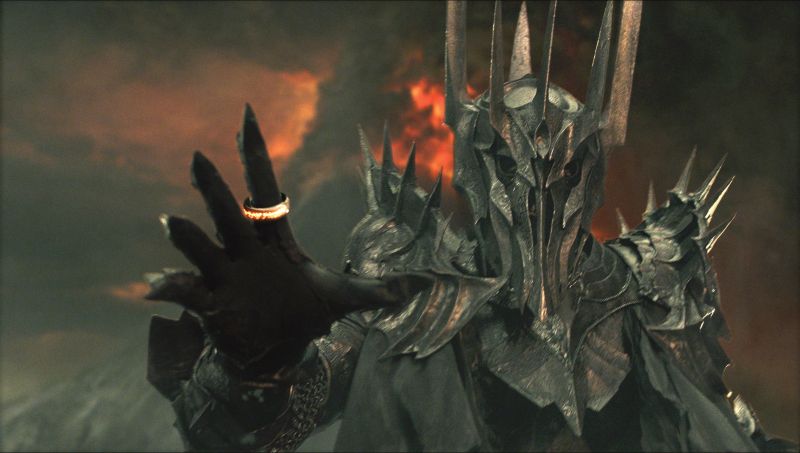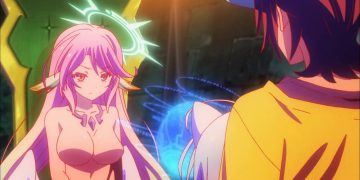We finally got an action-filled episode in Rings of Power Episode 6, but still no shortage of references to deeper lore and things to theorize on in this week’s breakdown-not to mention an explosive ending!
There were a lot of Easter Eggs and references to both the Lord of the Rings movie Trilogy and Tolkien’s Source Material. We’ll be going through all of them one by one and tell you about all the hidden details that you might want to know from this episode.
The Southland people, Numenorean soldiers, and Adar were heavily featured in this episode. So basically we got a lot of details about these three parties. Like Adar gave us “his version” of What’s up with Sauron” story. Which I think you should believe coming out of the mouth of the villain, and ways go deep into that story. Also, we got to learn about some Elven traditions and much more. Let’s start with the Easter Eggs in Rings of Power Episode 7.
Here are all the Rings Of Power Episode 6 Easter Eggs:
Adar’s Elven Side And Nampat
The episode opens on Adar’s armored glove digging in the soil, where he buries Alfirin seeds, saying “New life in defiance of death.” What I noticed here is he does this in secret- he’s behind large roots of a tree, hidden from the orcs. We’ll see later this is some elven tradition before going to battle, which gave me the sense that as much as Adar talks about being an orc himself, he obviously is slightly clinging to the part of him that was once elven.
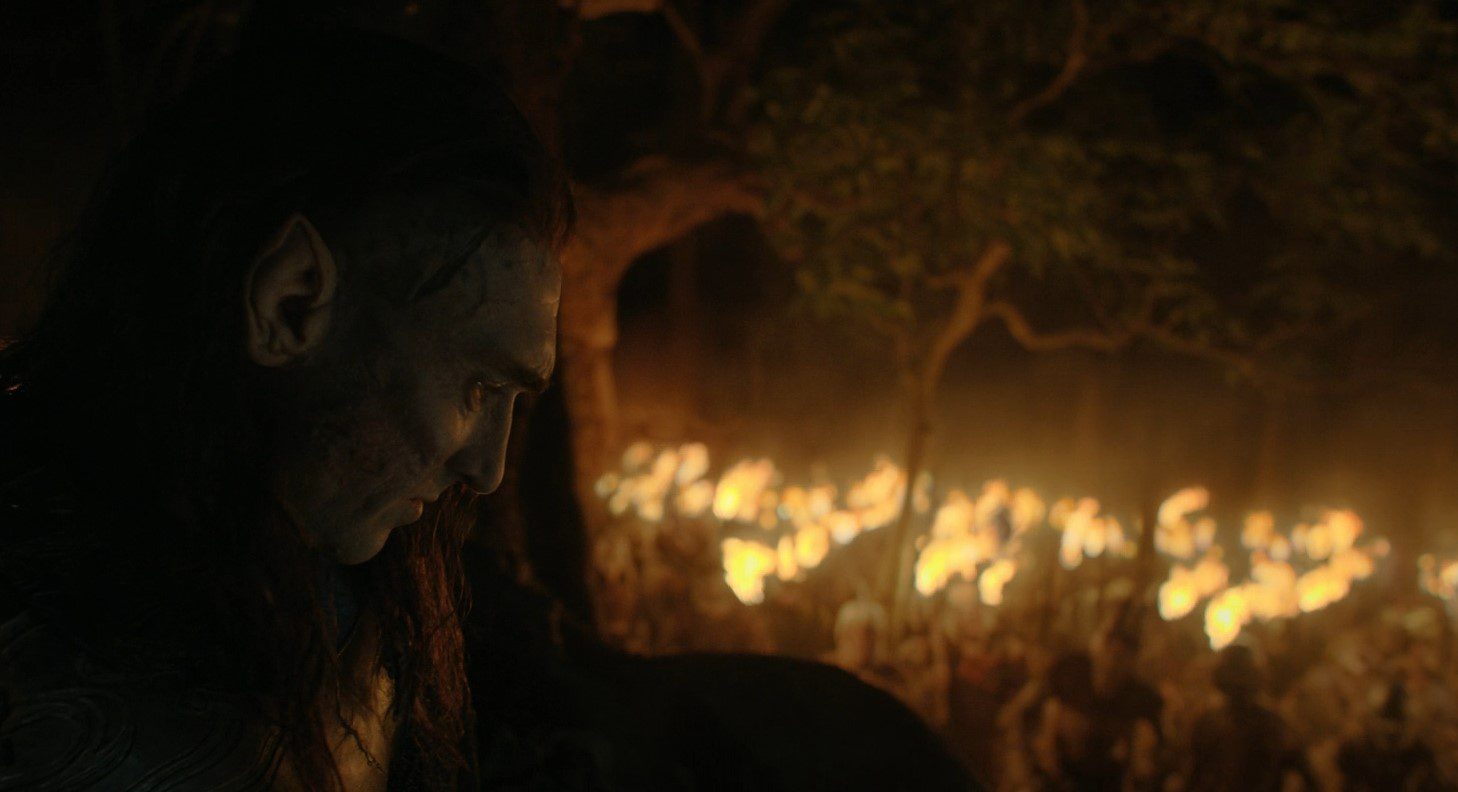
Adar says for the first time the orcs fight not as slaves but as brothers and sisters in their homes. And here I think we might have a second Jed Brophy orc who starts the chant of Nampat, which has been confirmed as black speech for “death”. And in seeing more new orcs, I continue to absolutely love the orc designs WETA did for the series. It’s an easy thing to take for granted, but man, there’s truly no substitute for these practical effects orcs – they look fantastic.
Orcs Using Dragon Skin
We get a good shot of the skins covering the orcs here and what we have here is dragon skin. As we mentioned earlier, these orcs and Adar had come from the Grey Mountains, where dragons were known to have lived – so it looks as though they managed to take one or two down and are using their hide – perhaps the skin of their bellies – to shield themselves from the sun.
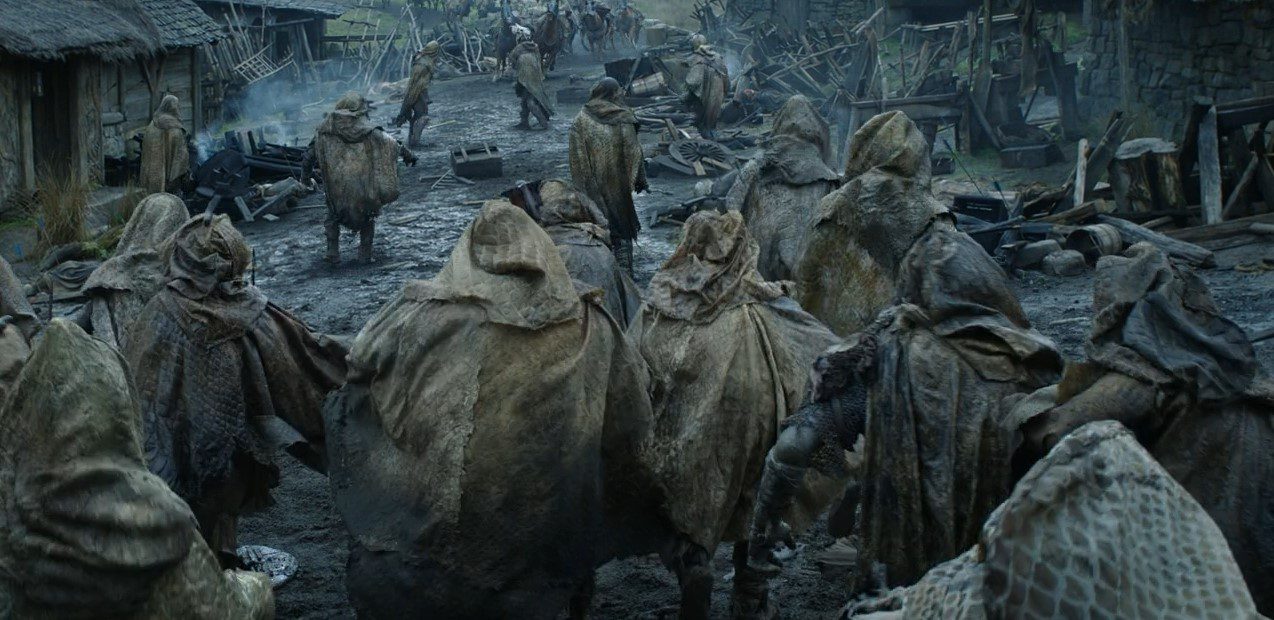
Episode Title “Udûn”
The very first reference we have in this episode is the title itself: Udûn. Udun refers to a few things in Tolkien’s world. For starters, it is the name of the deep valley in the northwest corner of Mordor – just inside the black gate. However, long before it was another name for Morgoth’s first fortress of Utumno.
You’ll recall back in the premiere episode, I and many others believed (and still do) that the fortress Galadriel’s company explores could be the remains of Utumno. More generally, the word Udun is Sindarin elvish and means “dark pit, underworld, or hell”. In all likelihood, the episode title refers to this definition rather than a specific location – as we will see the first move in Mordor becoming the dark pit it will become. And again, as we talked about in our premiere breakdown, Alfirin is another name for the Symbelmyne – the flower that later grows on the graves outside Edoras – and I won’t spoil it here, but on the grave of a notable Second Age hero among Men.
Ered Mithrin And The Ephel Arnen
Adar stands before his Uruk brethren and gives a rousing speech, within which he drops a couple names – saying they’ve traveled from Ered Mithrin to the Ephel Arnen. The Ered Mithrin are the Grey Mountains, north of Greenwood which is later known as Mirkwood. This mountain range is also notable as the Wthered Heath was known as a breeding ground for dragons.
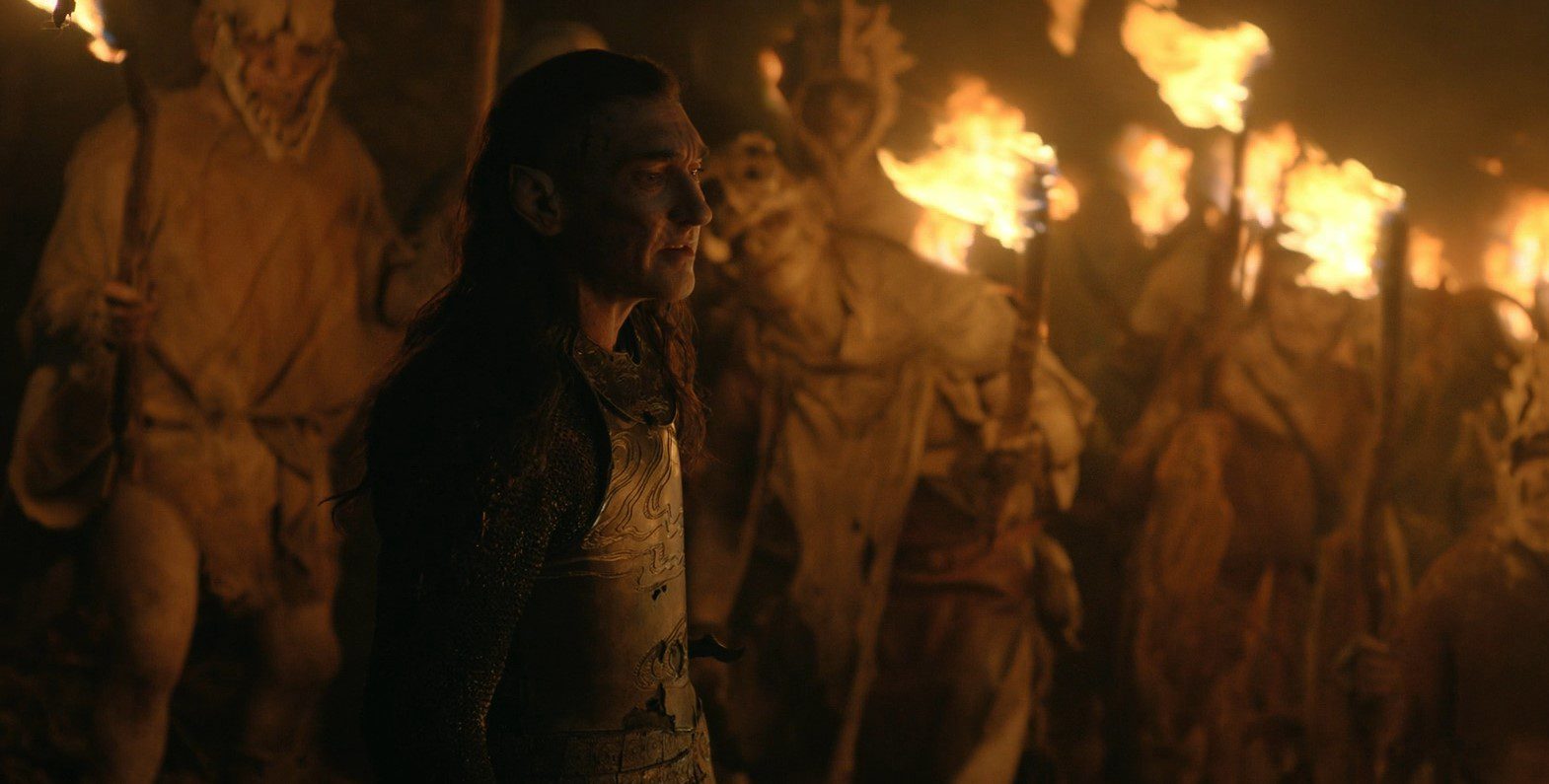
The second name – the Ephel Arnen, isn’t a term from the legendarium, but I believe I’ve deciphered it’s meaning. Ephel is a Sindarin term meaning “encircling fence” or “outer fence”, and Arnen is another name for the lands of Ithilien. However, since there is no Gondor at this time, the name Ithilien would not yet be in use for this area. Thus, Adar is speaking of the lands of Arnen which shares a border with the lands of Mordor.
Gimbatul And Vale
When Adar enter the Elven tower with the orcks many fans caught a familiar phrase when an orc captain says “Gimbatul”. This black speech word is found in the ring verse poem’s second line – Ash Nazg Gimbatul – “One ring to Find Them” – and sure enough the orc here is ordering his followers to find the people hidden in the tower.
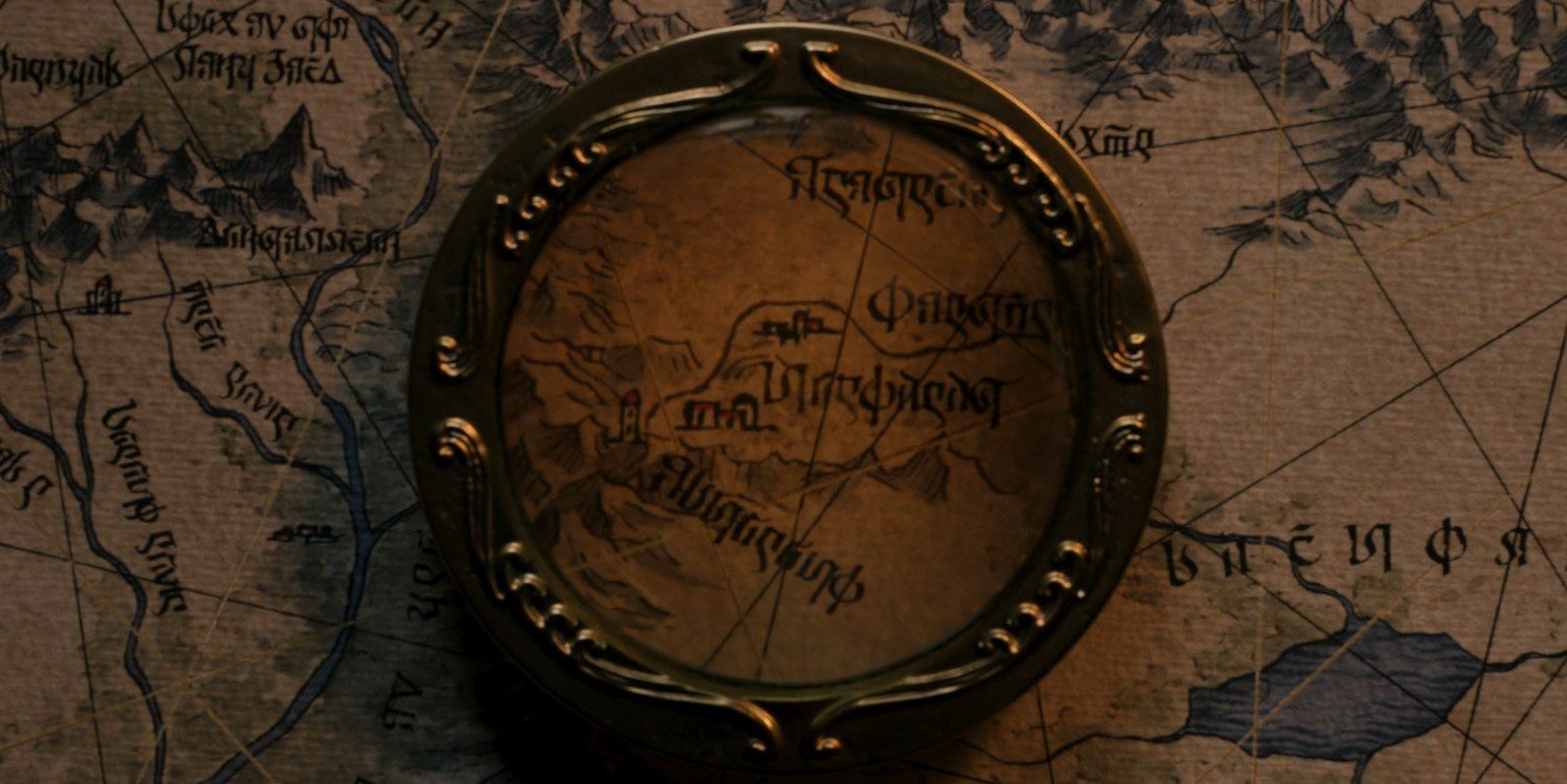
Next, we see Elendil telling Miriel they have a day’s sail into the mountains, which would be going up the Anduin river, then a day’s ride to get to Ostirith. Elendil mentions the Vale – this is referring to the pass into Mordor that will much later be known as the Morgul Vale. As we get a closer look at Miriel’s map with her magnifying glass, we see Ostirith is situated at this mountain corner, and again for reference, this here is the end of the mountain range where Minas Tirith will one day be – and the Vale they will cross through is directly east of this position.
Elven Eyes
Galadriel approaches Isildur and she guesses he wants to catch the first glimpse of land, revealing that she has been able to see the land for the past hour. Isildur responds “Keen are the eyes of the elves.” This is a direct quote from Isildur’s descendant Aragorn. Aragorn says this to Legolas after he counts and describes in detail the Riders of Rohan from over five leagues away.
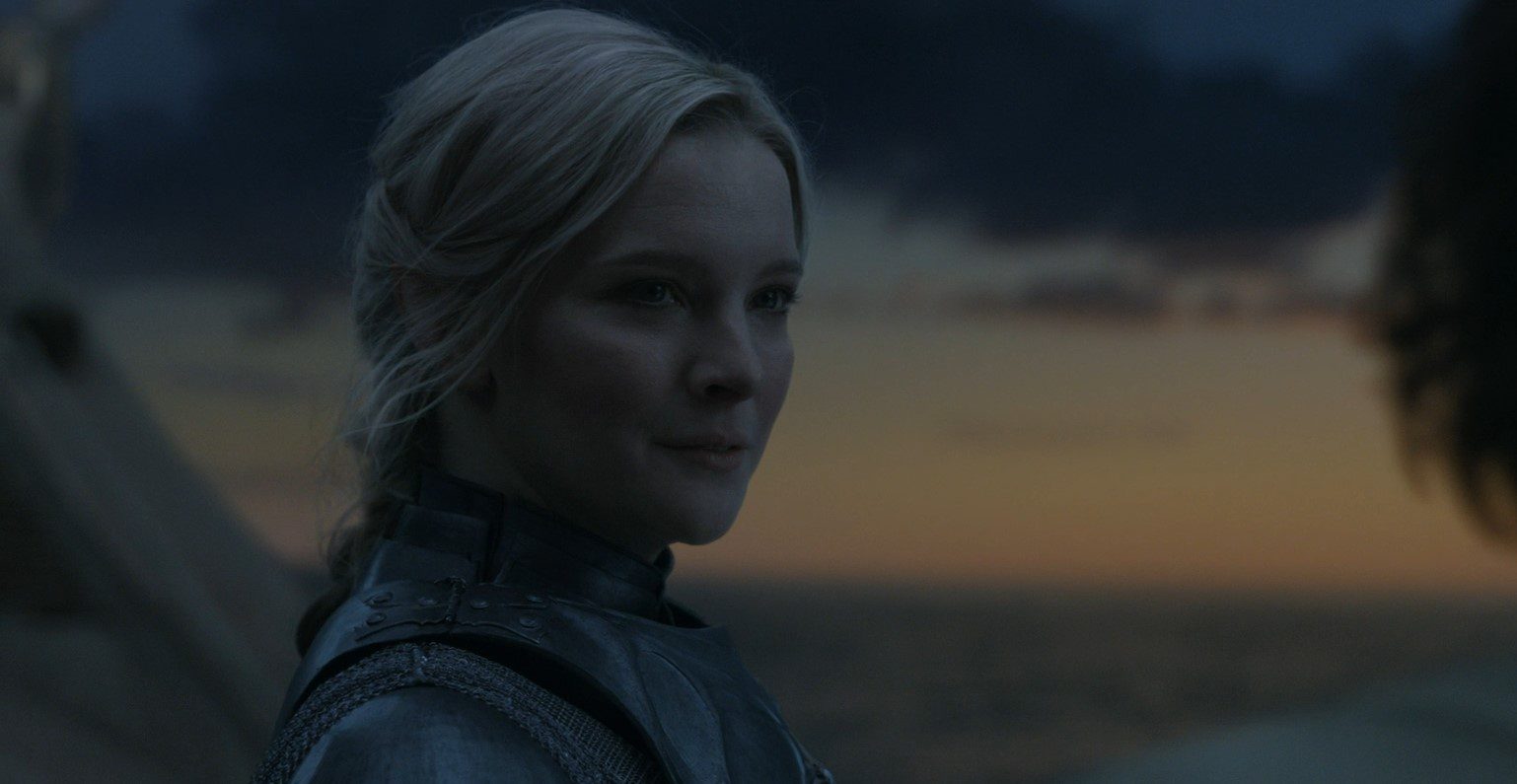
Bronwyn’s Shadow Speech
Theo asks Bronwyn if she remembers what she used to tell him when he had bad dreams, and Bronywn says “go back to bed you little brat.” I’m just messin’ with you. What she would tell him and tells him now is “in the end, this shadow is but a small and passing thing. There is light and high beauty for ever beyond its reach. Find the light and the shadow will not find you.”
Now you’re probably thinking – wow, that’s some dang beautiful dialogue there – and for good reason – that my friends is the mastery of Tolkien at work. You’ll probably recognize a small bit from the PJ films in Sam’s monologue at the end of the Two Towers.
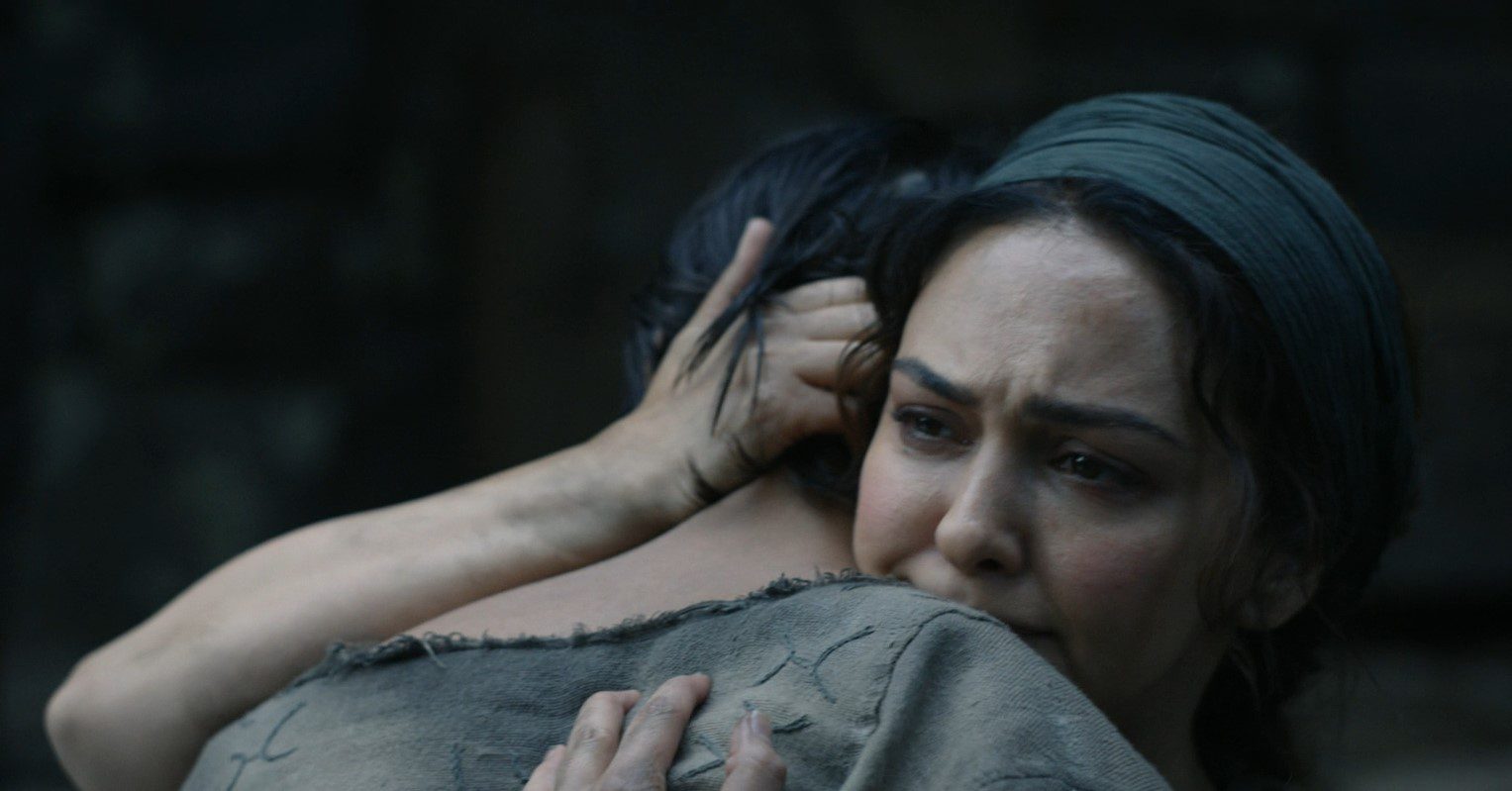
But this actually comes from the Return of the King book, when Sam sees a star twinkle above the clouds as he and Frodo are in the very lands of Mordor.
Alfirin Seeds
Theo goes inside to be the last line of defense for those unable to fight, and Bronwyn meets up with Arondir and he shares with her the tradition of planting Alfirin seeds. Here, Arondir mentions it is tradition to plant one – and we see him give two seeds to Bronwyn – one for each of them presumably. Broynwyn asks – new life, in defiance of death – which is the same phrase Adar says and I immediately wondered why these words would come to her and how she would know this elven phrase.
Speaking of Adar, seeing Arondir and Bronwyn plant two seeds makes it noticeable that Adar plants several. I presume that not only is he clinging to his elven origin, but partaking in this tradition on behalf of the uruks as well.
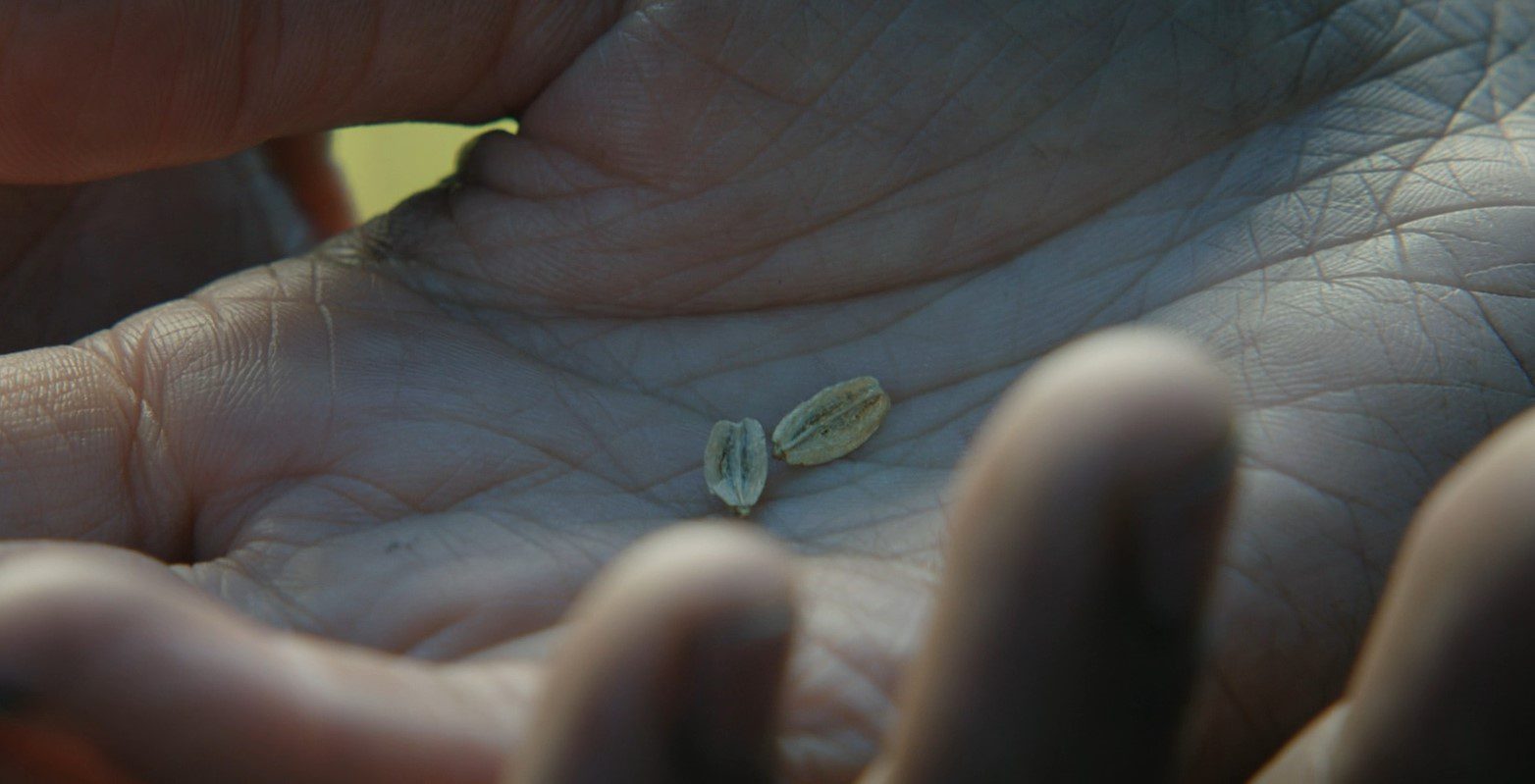
I’ll note that these moments with the Alfirin seeds remind me of one of my favorite scenes from the Hobbit films, which actually ended up on the cutting room floor and not even making the Extended Edition. It’s a moment where Bilbo buries his acorn in the dirt of Dale, saying it’s a promise – that there is a chance of new life. When faced with death, what can anyone do but go on living?
In this scene, Arondir also references one of the Valar who watches over growing things and those who tend them. This Valar is Yavanna, she is the wife of Aule who created the dwarves, and she not only helped create the two trees of Valinor, but also was instrumental in Eru deciding to create the Ents.
Adar’s Story About Sauron
When Galadriel ask Adar about Sauron. Adar claims that Sauron “dedicated himself to repairing Middle-earth, restoring its wrecked territories together in perfect order” following the destruction of Morgoth. The first part I think is a pretty big stretch, the second, however, makes a lot of sense knowing what we do about Sauron. We know that at the end of the First Age, Sauron repents to Eonwe for his evil deeds and in the Silmarillion it says “some hold that this was not at first falsely done”.
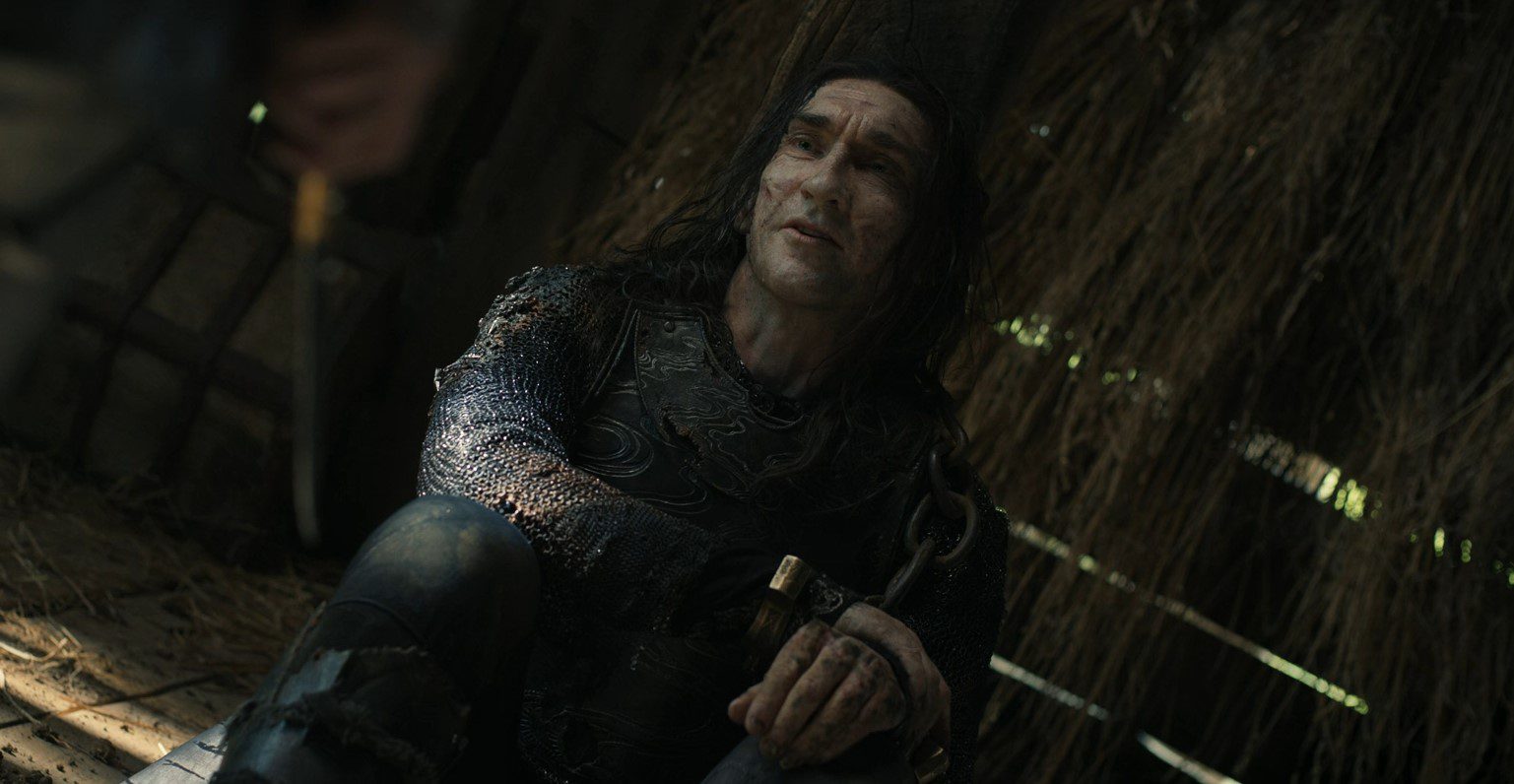
Now it goes on to say that Sauron flees rather than face the judgment of the valar, and from the sounds of it, he falls back into evil fairly soon afterward. The part that makes the most sense here is that Sauron would attempt to put everything in perfect order – for it is his obsession with order that leads him down the path of darkness in the first place. Again, this is a pretty big TBD for me – we’ll see how this plays out.
It makes sense that perhaps Sauron would contemplate his actions and ways in the early days of the Second Age, but the idea that he’s out and about being a good guy would be pushing the villain rehab thing way too far in my personal opinion. Granted, this is all coming from a guy who made a dude kill a kid last week, so maybe he’s not the best judge of what constitutes good and evil.
A Power Of Unseen World
Anyway, Adar says Sauron sought to craft a power not of flesh but over flesh – a power of the Unseen World. Turns out Sauron took a lot of his orcs to the northern fortress, and his experiments didn’t work to craft whatever it is he sought to craft – a shadow of dark knowledge hidden even from him.
During this description, we see a carving of a Balrog head, and various orc skulls. So I think the writing on the wall here is that Sauron sought a way to bring order by bringing people under his sway and that method will eventually be the Rings of Power. As for the dark knowledge hidden from him – I have a suspicion it will be the power of the magic mithrilchlorians we learned about last episode.
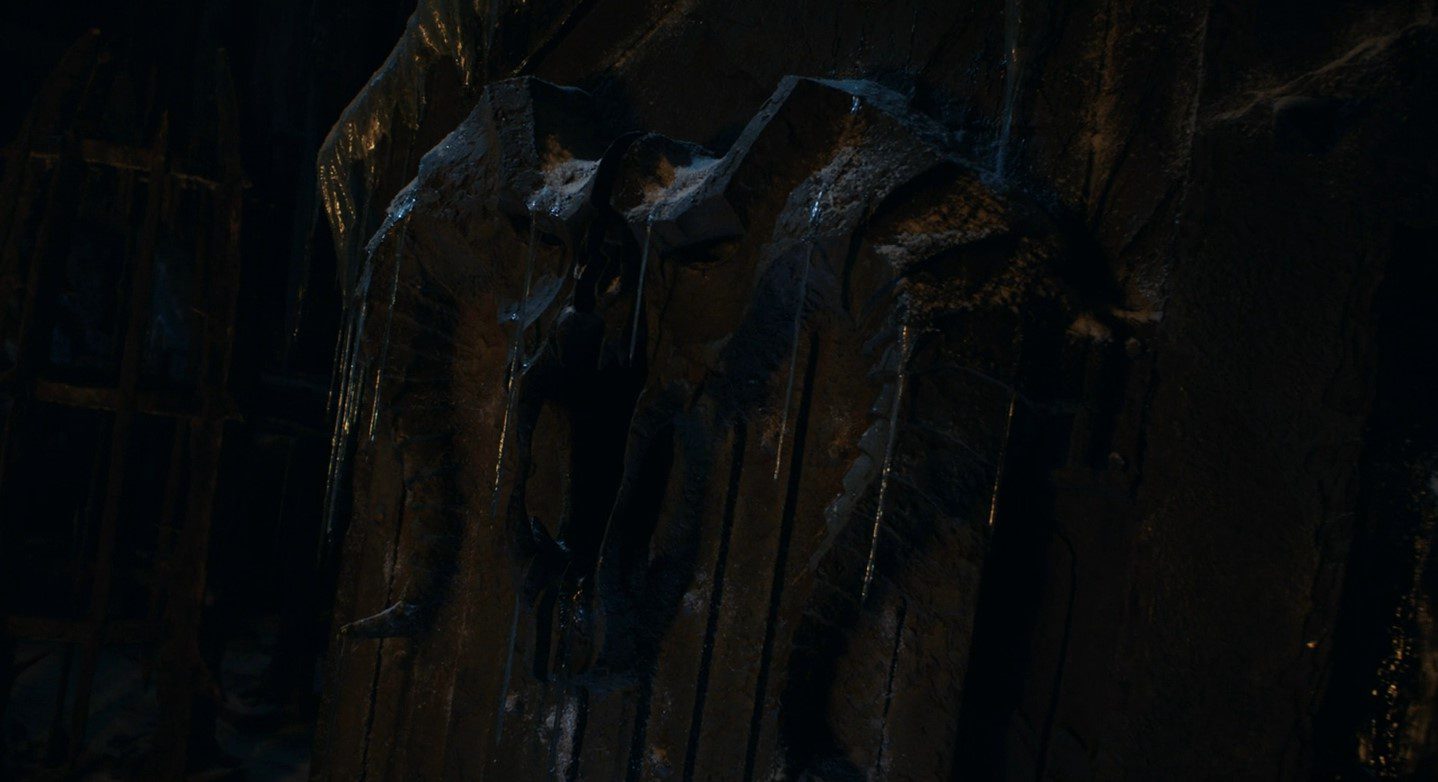
Adar says he sacrificed enough of his children for Sauron and so he split him open – he believes he killed Sauron. Of course, the joke is on Adar because Sauron is a truly immortal being and cannot be wholly killed – even if his physical form is destroyed which is what sounds like happened here – it’s only a matter of time until Sauron returns.
Galadriel and Adar go on to debate the nature of Uruks – Galadriel says they have hearts created by Morgoth, to which Adar responds they are creations of The One – the Master of the Secret Fire – otherwise known as Eru Iluvatar – the God of Tolkien’s created world.
Here, the show seems to be playing off Tolkien’s real-world struggle he had later in life with the idea of orcs being irredeemable. The question for me right now is how far they might take this. Again, it’s a wait-and-see – Adar probably isn’t the best judge of good and evil from what we’ve seen of him.
Talking To A House
We see Isildur who has a wounded Berek who is kind of freaking out. Elendil comes up to Berek and says “Athae no idhui hi” which I believe is only our second Sindarin elvish we’ve seen in the show and ironically both have been in this episode – and both spoken to horses.
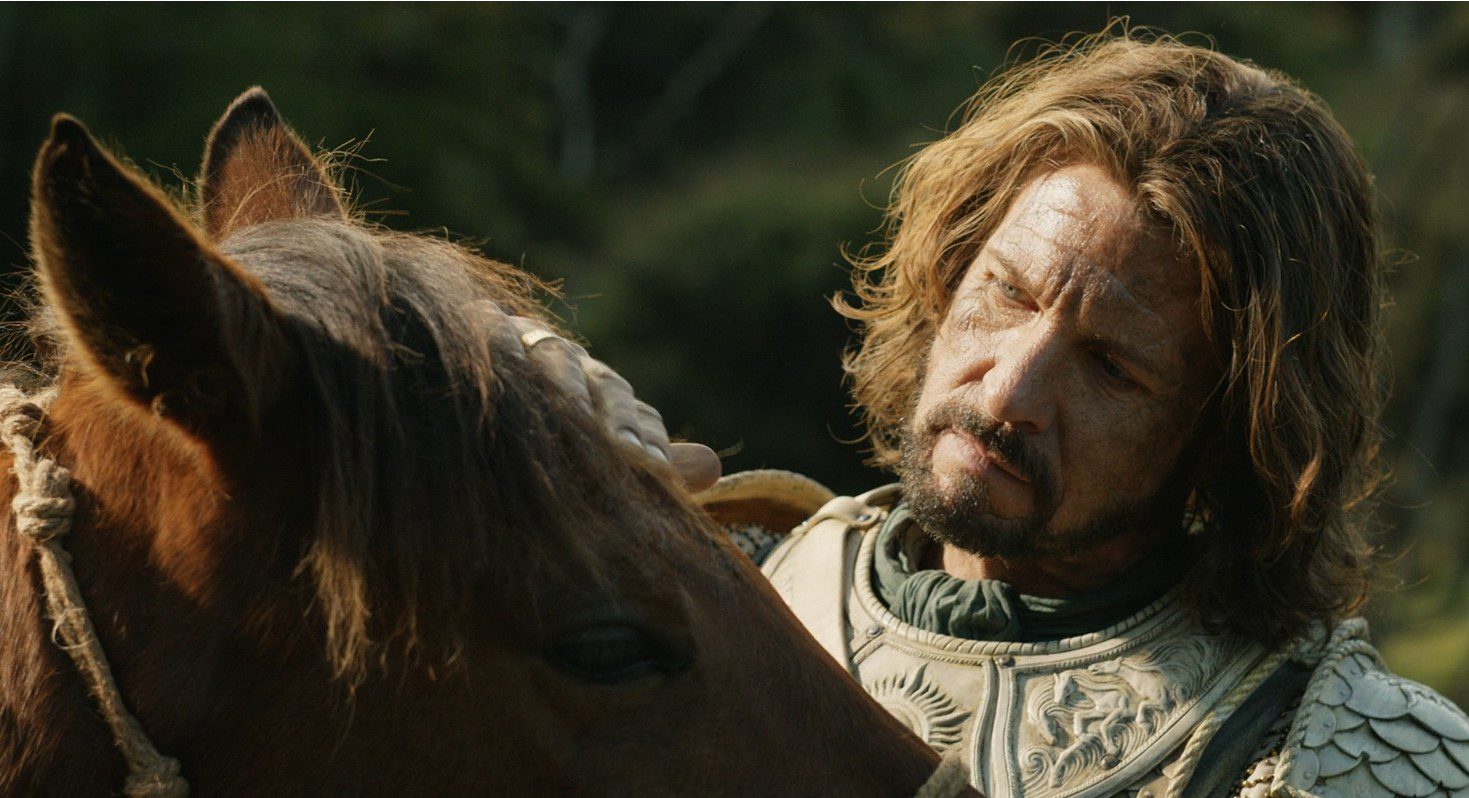
Based on a rough translation, I think he’s saying “you long for healing this night” or “be healed this night” – it’s something along those lines. Elendil talks about the bond formed between horse and rider and that Berek can feel Isildur’s pain. He says he learned it from Isildur’s mother and agrees to teach his son.
Real quick, Elendil drops the name Westernesse in this conversation, which is the common speech name for Numenor that we see pop up a good amount in The Lord of the Rings. Even though it’s a short scene, I really enjoyed the chance to slow down for a moment and show a bit of development in their relationship. In a pretty action-heavy episode, this is actually one of my favorite scenes.
Also Read: Rings Of Power Episode 5 Easter Eggs: The Dead Marsh, The Creation Of Mithril And The Wolves

